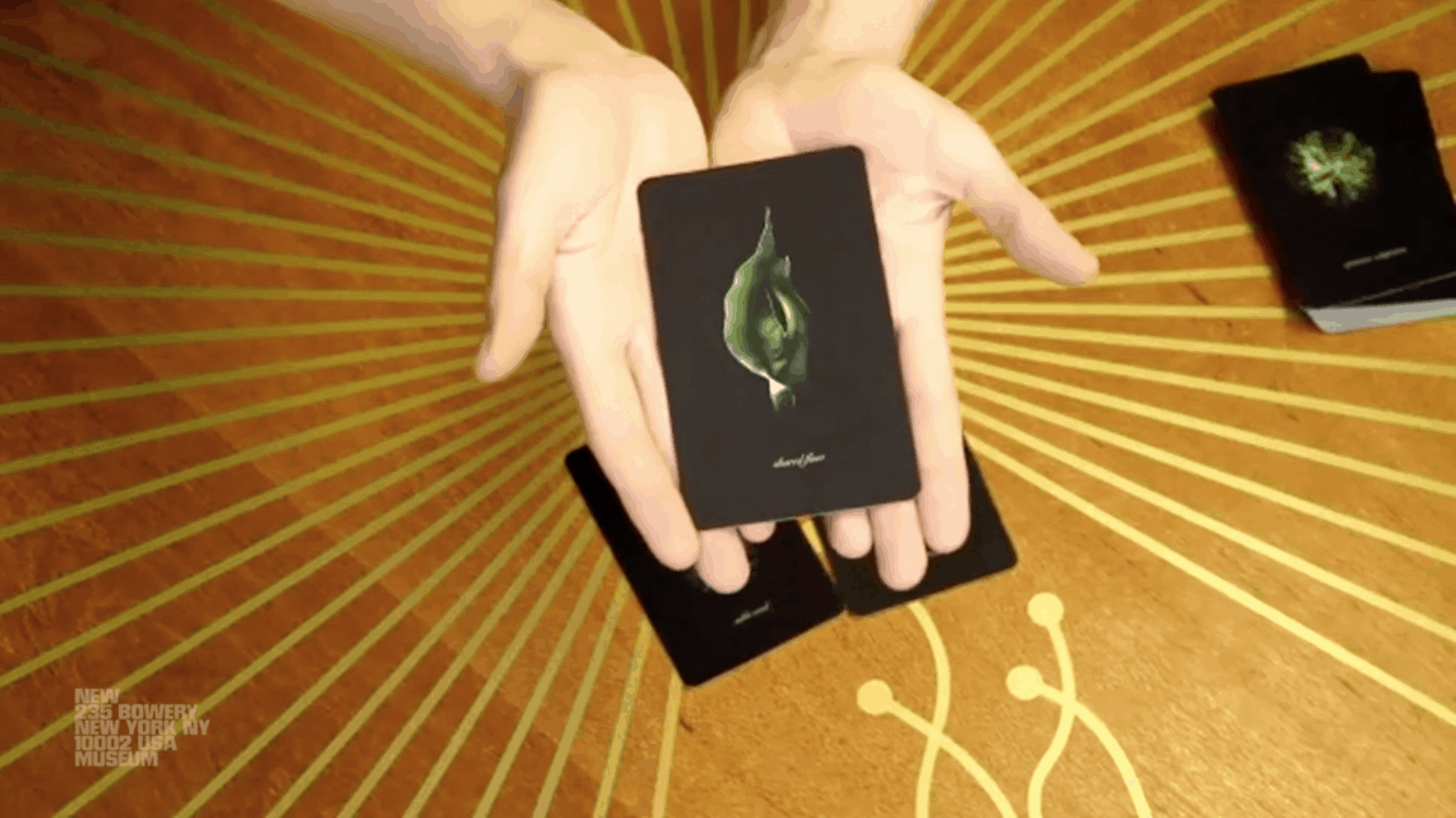Fortunes of the Forest: Divination, Dance, and Story was a livestreamed, participatory performance incorporating plant knowledge through ritual, movement and conversation. The event took place on August 18, 2020 as part of the digital residency “Ensayos: Passages” in celebration of the launch of our online periodical Más allá del fin / Beyond the End, issue #3.5. For Fortunes of the Forest, Australian Ensayos collaborators Dr. C.F. Black (Christine), Amaara Raheem, and Caitlin Franzmann came together to offer unique perspectives on plant consciousness. As an Indigenous legal scholar and intellectual explorer, Christine’s ancestry, research and travel have shaped her understanding of how to interact with plant beings and other beings on the Earth in a lawful manner. Christine spoke of a deep knowledge about the microscopic and galactic that Australian Aboriginals gained from intimately knowing a place and its shifting structures. Dance artist, Amaara Raheem, invited the audience to be seen and to move together in a guided hand movement score – a ritual to acknowledge the collective and to begin aligning with the plants in the Fortunes of the Forest deck. Caitlin Franzmann created Fortunes of the Forest with collaborator Man Cheung’s botanical photographs of plants found in Karawatha, an urban forest in Australia. One of a number of decks and guidebooks Franzmann has created, this deck prompts associations with living entities, with whom humans share primeval genes, and considers how we might attune to their ways of being on the planet. Prior to the event, participants were asked to contribute to a collective question. The questions posed were varied, profound, full of care and urgent: Is technology evolutionary? How do we make our collective stories transparent? Can biodiversity be recreated? How can we encourage more complexity and curiosity rather than fear and control? How/where can justice and survival meet? Do plants feel pain? How do they communicate with each other? With humans? How might we listen to plants? Can they tell us how to fix this broken world? How to transform together without violence or hypocrisy? What causes imbalance in primordial energy. From these inquiries, an overarching question was created to pose to the divination cards. How might we best connect with the world immediately around us, and what can we learn from the global pandemic? Caitlin led a card reading and the women conversed, guided by the three plants (common thistle, coastal she-oak and forest blue gum), to get to the heart of the collective question. Threads, stories and more questions arose. A key message that surfaced is that we are not necessarily custodians or guardians of the earth, but part of a much larger patterning within which we may experience turbulence, difficulties and transformations. When we see ourselves as patterned in, we see reminders everywhere of how to be in relation with the world – to be in a ‘shared flow’. Listen to the wind, to ancestors. Breathe with gratitude. Might the Eucalytpus salve humanity? The full discussion can be viewed in the video above. Following are the descriptions and images of each of the cards selected. PAST CARD: NOBLE WEED Cirsium vulgare // common thistle This solitary plant was found on the fringe of Karawatha Forest. To some it is considered a sign of neglect, as it thrives on fertile ground that has not been cared for. It is a prickly plant with an erect stem and purple flower head that produce wind borne seeds. To match its lengthy stem, the thistle has a taproot up to 70cm long. ‘Vulgare’ is Latin for ‘common’ and suggests something undesirable about the plant. It is designated as a noxious weed in Australia with management requiring deep cutting of the taproot prior to seed dispersal. To some, however, it is a symbol of nobility or protection and to others it is a highly nutritious food source. As the plant has spines to protect it from predators, the edible stem, leaves, and taproots, have no need for bitterness. Is there a situation in your life in which you are experiencing neglect? Are you neglecting people or situations that you consider nourishing? Like the roots of the thistle, are you able to tap to the source of this neglect? Can you consider your situation through a different lens? You may discover a hidden purpose or a heightened awareness of a need for selfprotection. Allocasuarina littoralis // black sheoak Casuarina is derived from the Malay word ‘kasuari’ (cassowary), referring to the similarity of the plants foliage to the bird’s feathers. ‘Littoralis’ is latin for ‘of the shore’ and whilst this tree is found along the coast, it also grows well in dry forests such as Karawatha Forest. In fact, ‘Karawatha’ is an Aboriginal word meaning ‘place of pines’ and it is thought that the pine-like Allocasurina littoralis influenced this place naming. The black sheoak is dioecious, meaning male and female flowers grow on separate plants. In the winter months the male trees turn gold when laden with pollen and female trees bear conelike fruit after small red flowers. Wind, the vital force that we cannot see, plays a crucial role in pollination. Wind is related to air, breath, and spirit; that which moves, surrounds, and pervades. The whistling of the wind through the fronds are considered by Australian indigenous people as voices of ancestors and spirits around us. Fallen needle leaves produce a thick mulch which inhibits other plants growing underneath. They are soil stabilisers with extensive root systems and root nodules housing bacteria that converts atmospheric nitrogen to nitrate which acts as a fertiliser. Eucalyptus leaf // gum leaf Leaves are the chief food producing organ of vascular plants, converting light and carbon dioxide into life sustaining carbohydrates. Gum leaves have intricate systems of netted veins that transport water and carbohydrates. This particular leaf shares a midrib, the principal vein that supports the leaf structure and function. Eucalyptus trees draw a tremendous amount of water from the soil and the leaves play an important role in the ascent of the water and release into the atmosphere through tiny pores that open and close. This is advantageous to the plant and its surrounding environment because of its cooling effect. Eucalyptus leaves also have the ability to avoid drying out by exposing only their edges to the sun’s rays. Leaves can represent the connectedness of all beings in the universe because of their vast numbers growing from a shared source. This particular leaf’s interweaving veins also suggests relationships that are built on a strong foundation of collaboration and communication. How do you regulate your own energy in relation to your environment and others? Would your situation benefit from going with the flow or adopting gentle adjustments to better conserve your energy? Dr. C.F. Black (Gold Coast, Australia) is an intellectual explorer and a writer. Her intellectual training includes a PhD in Law, Griffith University, her Australia, Australian Aboriginal ancestry, and travels throughout Native America and other Indigenous worlds. Her academic writing includes A Mosaic of Indigenous Legal Thought: Legendary Tales and Other Writings (Routledge, 2017). Research and travel have shaped her understanding of how to interact with plant beings and other beings on the Earth in a lawful manner. Currently, Black is developing online courses to share this knowledge with the general public. She is also an artist and short story author and is currently developing her first play: “The Assassination of the Soul of a Nation.” Caitlin Franzmann (Brisbane, Australia) is an artist who creates installations, performances, and social practice works that focus on place-based knowledge and clairsentience. Her work has been featured in exhibitions globally, including the National Gallery of Victoria, Naarm/Melbourne; Institute of Modern Art, Brisbane; Museum of Contemporary Art, Sydney; and Kyoto Art Centre, among others. Originally trained as an urban planner, she completed her Bachelor of Fine Art at Queensland College of Art in 2012. Amaara Raheem (Black Range, Australia) is a Sri Lankan-born, Australian-grown dance artist who lived in London for fifteen years. She is now based in both Naarm/Melbourne and regional Victoria (Black Range) and is co-making a residential hub for reparative and speculative practices that investigate the blur between life, art, and climate. Currently completing a practice-led PhD at School of Architecture and Urban Design, RMIT University, Amaara’s practice intentionally crosses cultural, spatial, disciplinary, geographic, linguistic, and cosmic borders. Fortunes of the Forest: Adivination, Dance, and Story fue una actuación participativa transmitida en vivo que incorporó el conocimiento de las plantas a través de rituales, movimientos y conversaciones. El evento se llevó a cabo el 18 de agosto de 2020 como parte de la residencia digital “Ensayos: Passages” en celebración del lanzamiento de nuestro periódico en línea Más allá del fin / Beyond the End, issue #3.5 Para Fortunes of the Forest, colaboradores de Australian Ensayos Dr. C.F. Black (Christine), Amaara Raheem, y Caitlin Franzmann se unieron para ofrecer perspectivas únicas sobre la conciencia de las plantas. Como estudiosa del derecho indígena y exploradora intelectual, la ascendencia, la investigación y los viajes de Christine han dado forma a su comprensión de cómo interactuar con los seres vegetales y otros seres de la Tierra de manera legal. Christine habló de un profundo conocimiento sobre lo microscópico y galáctico que los aborígenes australianos adquirieron al conocer íntimamente un lugar y sus estructuras cambiantes. La artista de danza, Amaara Raheem, invitó a la audiencia a ser vista y moverse juntos en una partitura de movimiento de manos guiada, un ritual para reconocer al colectivo y comenzar a alinearse con las plantas en el mazo de Fortunes of the Forest. Caitlin Franzmann created Fortunes of the Forest with collaborator Man Cheung’s botanical photographs of plants found in Karawatha, an urban forest in Australia. One of a number of decks and guidebooks Franzmann has created, this deck prompts associations with living entities, with whom humans share primeval genes, and considers how we might attune to their ways of being on the planet. Prior to the event, participants were asked to contribute to a collective question. The questions posed were varied, profound, full of care and urgent: Is technology evolutionary? How do we make our collective stories transparent? Can biodiversity be recreated? How can we encourage more complexity and curiosity rather than fear and control? How/where can justice and survival meet? Do plants feel pain? How do they communicate with each other? With humans? How might we listen to plants? Can they tell us how to fix this broken world? How to transform together without violence or hypocrisy? What causes imbalance in primordial energy. From these inquiries, an overarching question was created to pose to the divination cards. How might we best connect with the world immediately around us, and what can we learn from the global pandemic? Caitlin Franzmann creó Fortunes of the Forest con fotografías botánicas de plantas encontradas en Karawatha, un bosque urbano en Australia, del colaborador Man Cheung. Uno de los muchos mazos de cartas y guías que ha creado Franzmann, este mazo incita asociaciones con entidades vivientes, con quienes los humanos comparten genes primitivos, y considera cómo podemos sintonizarnos con sus formas de estar en el planeta. Antes del evento, se pidió a los participantes que contribuyeran a una pregunta colectiva. Las preguntas planteadas fueron variadas, profundas, llenas de cuidado y urgentes: ¿La tecnología es evolutiva? ¿Cómo hacemos transparentes nuestras historias colectivas? ¿Se puede recrear la biodiversidad? ¿Cómo podemos fomentar más complejidad y curiosidad en lugar de miedo y control? ¿Cómo/dónde pueden encontrarse la justicia y la supervivencia? ¿Las plantas sienten dolor? ¿Cómo se comunican entre ellos? ¿Con humanos? ¿Cómo podríamos escuchar a las plantas? ¿Pueden decirnos cómo arreglar este mundo roto? ¿Cómo transformarnos juntos sin violencia ni hipocresía? Lo que provoca el desequilibrio en la energía primordial. A partir de estas consultas, se creó una pregunta general para plantear a las cartas de adivinación. ¿Cómo podemos conectarnos mejor con el mundo que nos rodea inmediatamente y qué podemos aprender de la pandemia global? Caitlin dirigió una lectura de cartas y las mujeres conversaron, guiadas por las tres plantas (cardo común, roble costero y eucalipto azul del bosque), para llegar al corazón de la pregunta colectiva. Surgieron hilos, historias y más preguntas. Un mensaje clave que surgió es que no somos necesariamente custodios o guardianes de la tierra, sino parte de un patrón mucho más grande dentro del cual podemos experimentar turbulencias, dificultades y transformaciones. Cuando nos vemos como modelados, vemos recordatorios en todas partes de cómo estar en relación con el mundo, estar en un “flujo compartido”. Escucha al viento, a los ancestros. Respira con gratitud. ¿Podría el Eucalytpus salvar a la humanidad? La discusión completa se puede ver en el video de arriba. A continuación se muestran las descripciones e imágenes de cada una de las cartas seleccionadas. CARTA PASADA: HIERBA NOBLE Cirsium vulgare // cardo común Esta planta solitaria fue encontrada en la periferia del Bosque Karawatha. Para algunos se considera un signo de abandono, ya que prospera en terrenos fértiles que no han sido cuidados. Es una planta espinosa con un tallo erecto y una cabeza de flor morada que produce semillas transportadas por el viento. Para combinar con su largo tallo, el cardo tiene una raíz principal de hasta 70 cm de largo. Vulgare’ en latín significa ‘común’ y sugiere algo indeseable sobre la planta. Está designada como maleza nociva en Australia y su manejo requiere un corte profundo de la raíz principal antes de la dispersión de la semilla. Para algunos, sin embargo, es un símbolo de nobleza o protección y para otros es una fuente de alimento altamente nutritiva. Como la planta tiene espinas para protegerla de los depredadores, el tallo, las hojas y las raíces primarias comestibles no necesitan amargor. ¿Hay alguna situación en tu vida en la que estés experimentando abandono? ¿Estás descuidando a personas o situaciones que consideras nutritivas? Al igual que las raíces del cardo, ¿eres capaz de aprovechar la fuente de este descuido? ¿Puedes considerar tu situación a través de una lente diferente? Puede descubrir un propósito oculto o una mayor conciencia de la necesidad de autoprotección. Allocasuarina littoralis // sheoak negra Casuarina se deriva de la palabra malaya ‘kasuari’ (casuario), que se refiere a la similitud del follaje de las plantas con las plumas de las aves. ‘Littoralis’ en latín significa ‘de la orilla’ y aunque este árbol se encuentra a lo largo de la costa, también crece bien en bosques secos como el bosque de Karawatha. De hecho, ‘Karawatha’ es una palabra aborigen que significa ‘lugar de pinos’ y se cree que Allocasurina littoralis, similar a un pino, influyó en la denominación de este lugar. El sheoak negro es dioico, lo que significa que las flores masculinas y femeninas crecen en plantas separadas. En los meses de invierno, los árboles masculinos se vuelven dorados cuando están cargados de polen y los árboles femeninos dan frutos en forma de cono después de pequeñas flores rojas. El viento, la fuerza vital que no podemos ver, juega un papel crucial en la polinización. El viento está relacionado con el aire, la respiración y el espíritu; lo que mueve, rodea y penetra. Los indígenas australianos consideran el silbido del viento a través de las hojas como voces de antepasados y espíritus que nos rodean. Las hojas de aguja caídas producen un mantillo espeso que inhibe el crecimiento de otras plantas debajo. Son estabilizadores del suelo con extensos sistemas de raíces y nódulos de raíces que albergan bacterias que convierten el nitrógeno atmosférico en nitrato, que actúa como fertilizante. Eucalyptus leaf // hoja de goma Las hojas son el principal órgano productor de alimentos de las plantas vasculares, convirtiendo la luz y el dióxido de carbono en carbohidratos que sustentan la vida. Las hojas de goma tienen sistemas intrincados de venas enredadas que transportan agua y carbohidratos. Esta hoja en particular comparte una nervadura central, la vena principal que soporta la estructura y función de la hoja. Los árboles de eucalipto extraen una gran cantidad de agua del suelo y las hojas juegan un papel importante en el ascenso del agua y la liberan a la atmósfera a través de pequeños poros que se abren y cierran. Esto es ventajoso para la planta y el entorno que la rodea debido a su efecto refrescante. Las hojas de eucalipto también tienen la capacidad de evitar que se sequen al exponer solo sus bordes a los rayos del sol. Las hojas pueden representar la conexión de todos los seres del universo debido a que su gran número crece a partir de una fuente compartida. Las venas entrelazadas de esta hoja en particular también sugieren relaciones que se construyen sobre una base sólida de colaboración y comunicación. ¿Cómo regulas tu propia energía en relación con tu entorno y los demás? ¿Se beneficiaría su situación de seguir la corriente o de adoptar ajustes suaves para conservar mejor su energía? Dr. CF Black (Gold Coast, Australia) es un exploradora intelectual y escritora. Su formación intelectual incluye un doctorado en derecho de la Universidad de Griffith, su ascendencia aborigen australiana y australiana, y viajes por la América nativa y otros mundos indígenas. Su escritura académica incluye Un Mosaico del Pensamiento Legal Indígena: Cuentos Legendarios y Otros Escritos (Routledge, 2017). La investigación y los viajes han dado forma a su comprensión de cómo interactuar con los seres vegetales y otros seres de la Tierra de manera legal. Actualmente, Black está desarrollando cursos en línea para compartir este conocimiento con el público en general. También es artista y autora de cuentos y actualmente está desarrollando su primera obra: “El asesinato del alma de una nación”. Caitlin Franzmann (Brisbane, Australia) es una artista que crea instalaciones, performances y obras de práctica social que se centran en el conocimiento basado en el lugar y la clarividencia. Su trabajo ha aparecido en exposiciones en todo el mundo, incluida la Galería Nacional de Victoria, Naarm/Melbourne; Instituto de Arte Moderno, Brisbane; Museo de Arte Contemporáneo, Sydney; y el Centro de Arte de Kioto, entre otros. Originalmente formada como planificadora urbana, completó su Licenciatura en Bellas Artes en Queensland College of Art en 2012. Amaara Raheem (Black Range, Australia) es una artista de danza australiana nacida en Sri Lanka que vivió en Londres durante quince años. Ahora tiene su sede tanto en Naarm/Melbourne como en la región de Victoria (Black Range) y está co-creando un centro residencial para prácticas reparadoras y especulativas que investigan la falta de definición entre la vida, el arte y el clima. Actualmente completando un doctorado dirigido por la práctica en la Escuela de Arquitectura y Diseño Urbano de la Universidad RMIT, la práctica de Amaara cruza intencionalmente fronteras culturales, espaciales, disciplinarias, geográficas, lingüísticas y cósmicas.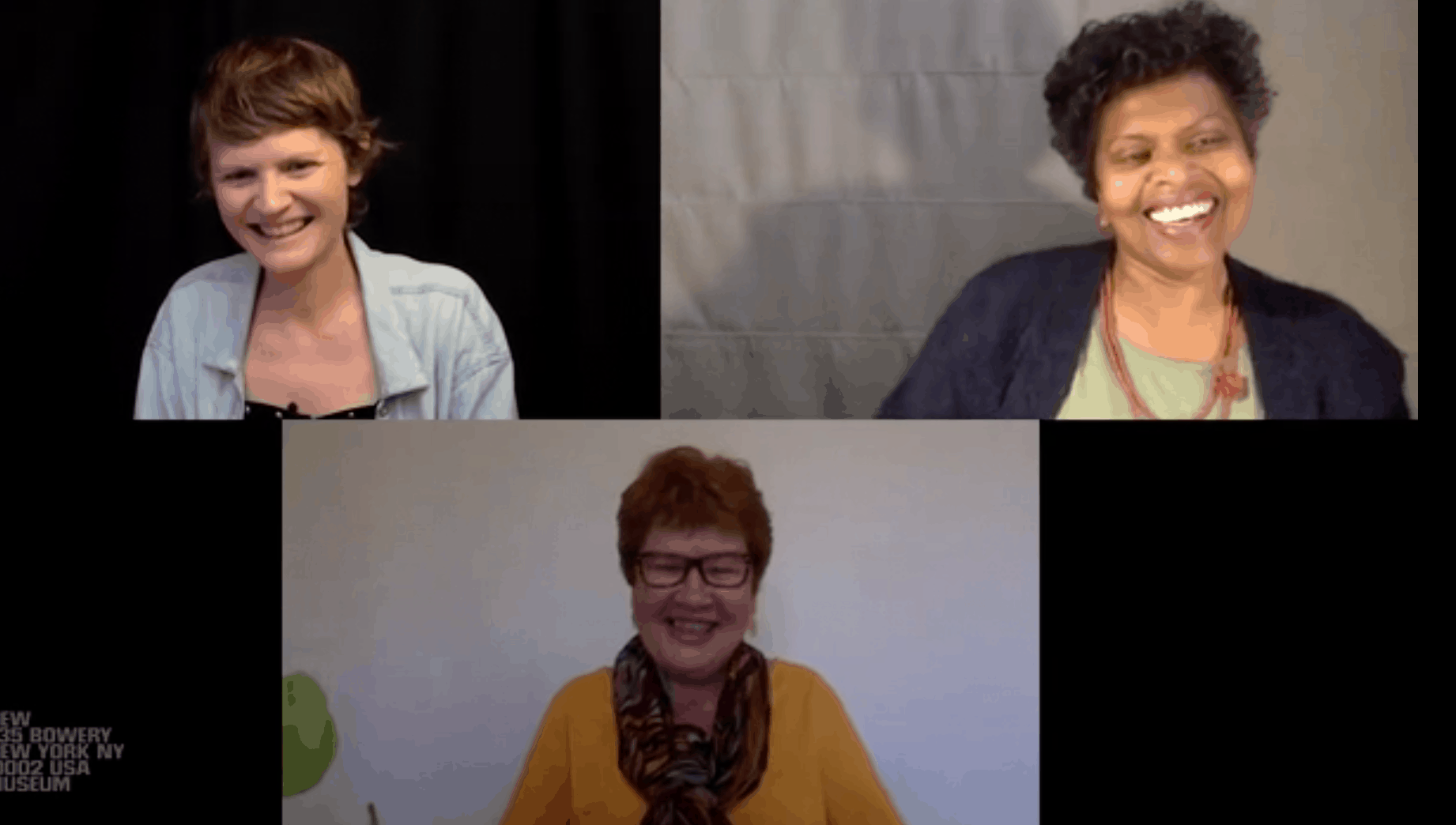


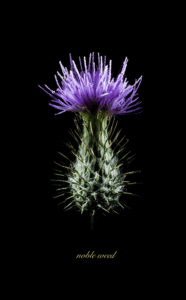
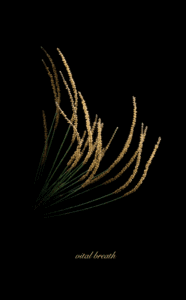 PRESENT CARD: VITAL BREATH
PRESENT CARD: VITAL BREATH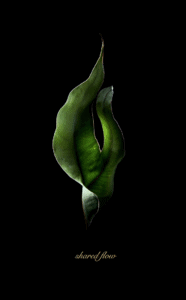 FUTURE CARD: SHARED FLOW
FUTURE CARD: SHARED FLOW



 CARTA REGALO: ALIENTO VITAL
CARTA REGALO: ALIENTO VITAL CARTA FUTURO: FLUJO COMPARTIDO
CARTA FUTURO: FLUJO COMPARTIDO

